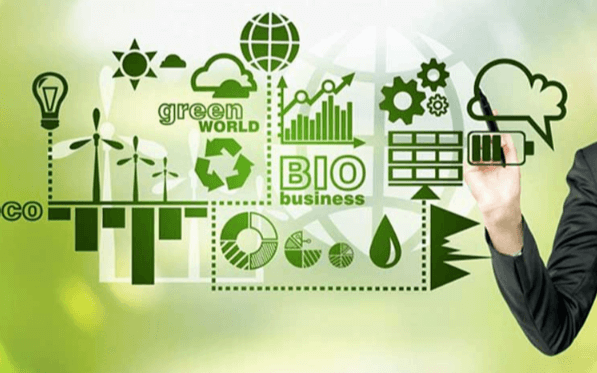What are the latest developments in sustainable technology and how are they helping to combat climate change?

Introduction
Climate change is one of the most pressing issues of our time, demanding innovative solutions to mitigate its effects and build a sustainable future. Sustainable technology, encompassing a wide range of advancements from renewable energy to green infrastructure, plays a critical role in this endeavor. This article explores the latest developments in sustainable technology and how they are contributing to the fight against climate change.
Understanding Sustainable Technology
Sustainable technology refers to innovations and advancements designed to meet present needs without compromising the ability of future generations to meet theirs. This includes technologies that reduce environmental impact, promote resource efficiency, and foster social and economic sustainability.
The Role of Renewable Energy
Solar Power Innovations
Solar power continues to lead the charge in renewable energy developments. Innovations such as perovskite solar cells offer higher efficiency and lower costs compared to traditional silicon-based cells. Additionally, solar panel integration into building materials, known as Building-Integrated Photovoltaics (BIPV), is revolutionizing urban energy consumption.
Wind Energy Advancements
Wind energy has seen significant advancements with the development of larger and more efficient turbines. Offshore wind farms are expanding, utilizing floating turbine technology to harness wind energy in deeper waters where wind speeds are higher and more consistent.
Hydropower Developments
Hydropower remains a cornerstone of renewable energy, with innovations focusing on minimizing ecological disruption. Small-scale hydro systems and run-of-river installations are being designed to generate power without the need for large dams, preserving river ecosystems.
Geothermal Energy Progress
Geothermal energy taps into the Earth’s internal heat to generate power. Recent advancements include enhanced geothermal systems (EGS) that can be deployed in a wider range of locations, significantly expanding the potential for geothermal energy production.
Green Transportation Solutions
Electric Vehicles (EVs)
Electric vehicles are at the forefront of the green transportation revolution. Improved battery technologies, such as solid-state batteries, are increasing the range and reducing the cost of EVs. Additionally, the expansion of charging infrastructure is making EVs more accessible to the public.
Hydrogen Fuel Cells
Hydrogen fuel cell technology is gaining traction as a sustainable transportation solution. Fuel cells convert hydrogen into electricity with water as the only byproduct, offering a clean alternative to fossil fuels. Advances in hydrogen production and storage are making this technology more viable for widespread use.
Public Transportation Upgrades
Public transportation systems are being upgraded with sustainability in mind. Electric buses, trams, and trains are reducing urban emissions, while innovations in scheduling and route optimization are enhancing efficiency and convenience for passengers.
Sustainable Aviation Technologies
The aviation industry is exploring sustainable technologies to reduce its carbon footprint. Biofuels derived from sustainable sources, electric and hybrid-electric aircraft, and improvements in aerodynamics and lightweight materials are all contributing to greener air travel.
Energy Storage and Efficiency
Battery Technology Advancements
Energy storage is critical for balancing supply and demand in renewable energy systems. Advanced battery technologies, such as lithium-sulfur and zinc-air batteries, offer higher energy densities and longer lifespans compared to traditional lithium-ion batteries.
Smart Grids
Smart grids integrate digital technology with the electrical grid to improve reliability and efficiency. These systems enable real-time monitoring and management of energy distribution, facilitating the integration of renewable energy sources and reducing energy losses.
Energy-Efficient Appliances
Innovations in energy-efficient appliances are helping consumers reduce their energy consumption. From smart thermostats to energy-saving refrigerators and washing machines, these appliances use advanced technology to operate more efficiently.
Building Energy Management Systems
Building energy management systems (BEMS) utilize sensors and automation to optimize energy use in buildings. By monitoring and controlling lighting, heating, cooling, and other systems, BEMS reduce energy consumption and lower utility bills.
Sustainable Agriculture and Food Production
Precision Farming
Precision farming uses technology to optimize crop yields and reduce resource use. GPS-guided equipment, drones, and sensors collect data on soil conditions, weather, and crop health, enabling farmers to make informed decisions and minimize waste.
Vertical Farming
Vertical farming involves growing crops in stacked layers, often in controlled indoor environments. This method maximizes space use, reduces water consumption, and eliminates the need for pesticides, making it a sustainable solution for urban agriculture.
Lab-Grown Meat
Lab-grown meat, also known as cultured or cell-based meat, is produced by cultivating animal cells in a controlled environment. This technology reduces the environmental impact of meat production by minimizing land and water use and eliminating the need for livestock farming.
Sustainable Packaging
Sustainable packaging solutions, such as biodegradable materials and reusable containers, are reducing the environmental impact of food production and distribution. Innovations in packaging design and materials are helping to minimize waste and promote recycling.
Water Conservation Technologies
Desalination Innovations
Desalination technology, which converts seawater into freshwater, is becoming more efficient and sustainable. Innovations such as reverse osmosis and solar-powered desalination are reducing energy consumption and making desalination a viable solution for water-scarce regions.
Water Recycling
Water recycling technologies treat wastewater for reuse in various applications, including irrigation, industrial processes, and even drinking water. These systems reduce the demand for freshwater resources and promote sustainable water management.
Smart Irrigation Systems
Smart irrigation systems use sensors and automation to optimize water use in agriculture and landscaping. By monitoring soil moisture levels and weather conditions, these systems deliver water precisely when and where it is needed, reducing waste and improving crop yields.
Water-Efficient Appliances
Water-efficient appliances, such as low-flow showerheads and faucets, water-saving toilets, and efficient washing machines and dishwashers, help conserve water in homes and businesses. These innovations reduce water consumption without sacrificing performance.
Circular Economy Initiatives
Recycling Advancements
Advancements in recycling technology are improving the efficiency and effectiveness of waste management. Innovations such as chemical recycling, which breaks down plastics into their chemical components for reuse, are helping to close the loop in the circular economy.
Waste-to-Energy Technologies
Waste-to-energy technologies convert waste materials into usable energy, reducing landfill waste and providing a renewable energy source. Processes such as anaerobic digestion and gasification are being used to generate electricity and heat from organic waste.
Sustainable Product Design
Sustainable product design focuses on creating products that are durable, repairable, and recyclable. By considering the entire lifecycle of a product, designers can reduce environmental impact and promote a circular economy.
Industrial Symbiosis
Industrial symbiosis involves the exchange of resources between industries to reduce waste and improve efficiency. By utilizing byproducts and waste materials from one industry as inputs for another, industrial symbiosis promotes resource conservation and sustainability.
Green Building and Construction
Eco-Friendly Building Materials
Eco-friendly building materials, such as recycled steel, bamboo, and rammed earth, are reducing the environmental impact of construction. These materials are often sourced sustainably and have lower embodied energy compared to traditional building materials.
Green Architecture
Green architecture integrates sustainable design principles to minimize the environmental footprint of buildings. Features such as green roofs, passive solar design, and natural ventilation reduce energy consumption and enhance occupant comfort.
Sustainable Urban Planning
Sustainable urban planning promotes the development of compact, walkable, and transit-oriented communities. By reducing urban sprawl and encouraging mixed-use development, sustainable urban planning reduces transportation emissions and promotes efficient land use.
Retrofitting Existing Structures
Retrofitting existing buildings with energy-efficient technologies and materials can significantly reduce their environmental impact. Upgrades such as improved insulation, energy-efficient windows, and renewable energy systems extend the lifespan of buildings and enhance their sustainability.







